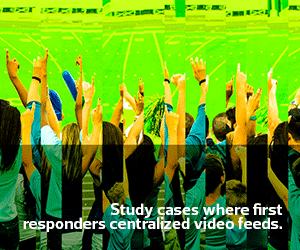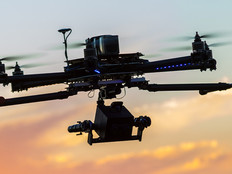1. Determine Network Connectivity and Storage Options
Network connectivity, both bandwidth and latency, are most often mentioned as reasons to shift pieces of an application from a cloud data center to a pure edge or hybrid edge model. Video surveillance cameras are an excellent example. While cloud-based network video recorders (NVRs) are popular with consumer-grade security vendors, large buildings and citywide or countywide video networks typically use on-premises edge computing.
The physical security teams in charge of these cameras are concerned with the privacy, integrity and chain of custody of their data, which often pushes them toward on-premises solutions. But IT teams have another concern: WAN requirements. Streaming dozens of cameras to a cloud-based NVR can require gigabits of congestion-free, high-availability bandwidth. Smart cameras may be able to dynamically change their capture frame rate and resolution, but IT teams can’t capacity-plan based on best-case scenarios without risking data loss.
For example, IT teams may choose to keep data on-premises or on a local NVR at each site to satisfy the requirements of the physical security team, IT and network team, and legal department.
By using edge computing strategically for both image analysis and NVR applications, end users will be happy with application performance and the IT team won’t need to overprovision network bandwidth.
In municipal video applications, government IT teams can also work with telecommunications carriers that can deliver edge services, another type of edge computing that takes advantage of smaller computing elements in telecom cabinets integrated with carrier wireless and wired services.
MORE FROM STATETECH: Criminal justice agencies sort big data with digital evidence management.
2. Examine Security and Data Sovereignty for Edge Devices
A second factor that may push IT teams toward edge computing is security — either absolute security or data sovereignty. While cloud service providers have made huge efforts to address the security concerns of enterprise and government customers, there are still applications that may require the additional security guarantees of an on-premises data center. There are also CIOs who have a personal feeling that it is important to keep their agency’s most sensitive data in an onsite data center, shifting from the cloud to edge data centers and edge computing.
Because of the sensitivity of local government data and the conflicting jurisdictions that may apply, CIOs may make good arguments for keeping some data on-premises under the agency’s direct physical control. For local government IT teams that may be caught in middle of a political war, having local control of how they respond to discovery demands and subpoenas can be a factor in deciding where to house and process data.
Security can also be based on connectivity between IoT devices. Simple sensors are easy to isolate from organizational networks behind a firewall, but networking can become complicated when sensors are combined with devices such as control systems for building energy; city utilities such as power, water and wastewater; or physical security systems such as door locks. Opening VPN tunnels to a third-party data center or service provider is one approach, but some systems work better when sensors, actuators and processors are all tightly coupled on the same network — an edge computing approach.
CONSIDER: The importance of geospatial data to emergency response.
3. Assess Electrical Power Requirements for Internet of Things
Electrical power budgets present a third aspect for consideration. The presence or absence of power can strongly affect IoT designs, which will also affect how the data from IoT devices is collected and processed. Combining IoT devices with networking is a given, but whether a device will have unlimited power and networking through a Power over Ethernet connection or must survive on a battery and Bluetooth connectivity will determine what computing scenarios are most realistic and reliable.
Edge computing isn’t an either-or proposition for local government IT teams. With a spectrum of options ranging from small appliances and on-premises data centers to service provider edge computing, IT managers can select the right architecture for video surveillance — including hybrid architectures that combine edge processing and cloud systems.











